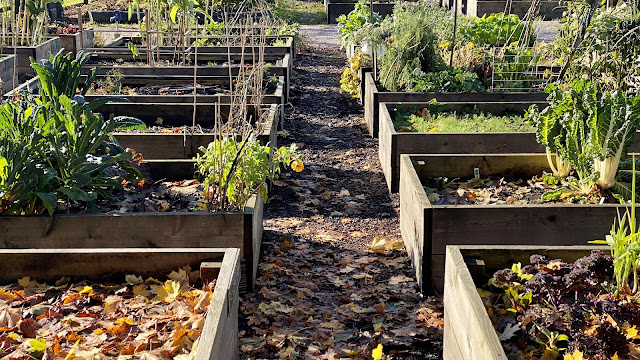As the days grow longer and the first signs of spring start to appear, avid gardeners and allotment enthusiasts eagerly embrace the opportunity to get their hands dirty once again. April marks a pivotal month for allotment gardening, as it's the time to kick-start the growing season in full swing. In this guide, we'll take you through a comprehensive list of essential tasks to tackle on your allotment in April, ensuring a bountiful harvest and a thriving garden throughout the year.
1. Soil Preparation: April is the ideal time to focus
on preparing your allotment's soil for planting. Begin by clearing away any
debris, weeds, and remnants of previous crops. Once your plot is clean, perform
a soil test to assess its pH and nutrient levels. Based on the results, amend
the soil with organic matter, compost, and well-rotted manure to create a
nutrient-rich and well-draining foundation for your plants.
2. Planting and Sowing: April is the month to sow a
variety of seeds both indoors and directly in the soil. Start seeds indoors for
plants that require a longer growing season, such as tomatoes, peppers, and
eggplants. Outdoors, sow hardy vegetables like carrots, radishes, peas, and
lettuce directly into the ground. Don't forget to check your local frost dates
and weather conditions before planting to ensure the safety of your delicate
seedlings.
3. Potato Planting: Potatoes are a staple crop for
many allotment gardeners, and April is the time to get them in the ground.
Prepare your potato bed by loosening the soil and creating trenches. Place your
seed potatoes at the bottom of the trenches, ensuring that each seed has enough
space to grow. As the plants emerge, gradually fill in the trenches with soil,
known as "earthing up," to encourage higher yields.
4. Weed Control: Weeds can quickly take over your
allotment if left unchecked. Spend time in April diligently removing weeds to
prevent them from competing with your crops for nutrients and water. Consider
using mulch to suppress weed growth and maintain soil moisture. Organic mulches
like straw or wood chips also contribute to soil health as they break down over
time.
5. Pruning and Maintenance: Inspect fruit trees and
bushes for any dead or diseased branches that need pruning. Pruning not only
promotes healthy growth but also enhances the overall appearance of your
allotment. It's also a great time to tie up and train climbing plants, ensuring
they have proper support as they grow.
6. Pest and Disease Prevention: April is the perfect
opportunity to establish a solid defense against pests and diseases. Set up
physical barriers like row covers to protect young plants from hungry insects.
Regularly inspect your plants for signs of pests or diseases, and take prompt
action to address any issues. Employ natural pest control methods such as
introducing beneficial insects to your garden ecosystem.
7. Composting: As you work through these essential
tasks, gather plant debris and kitchen scraps to create a nutrient-rich compost
pile. Compost is a valuable asset for improving soil structure and fertility.
Regularly turning the compost pile will accelerate the decomposition process,
allowing you to use the finished compost in the months to come.
April is a month of excitement and anticipation for
allotment gardeners, as it marks the beginning of a journey that will yield
delicious and rewarding results. By dedicating time to soil preparation,
planting, maintenance, and pest control, you're setting the stage for a
thriving garden throughout the year. Remember, each allotment is a unique
canvas, so adapt these tasks to your specific growing conditions and
preferences. With care, dedication, and a touch of Mother Nature's magic, your
April allotment adventures are bound to bear fruit – both literally and figuratively.

